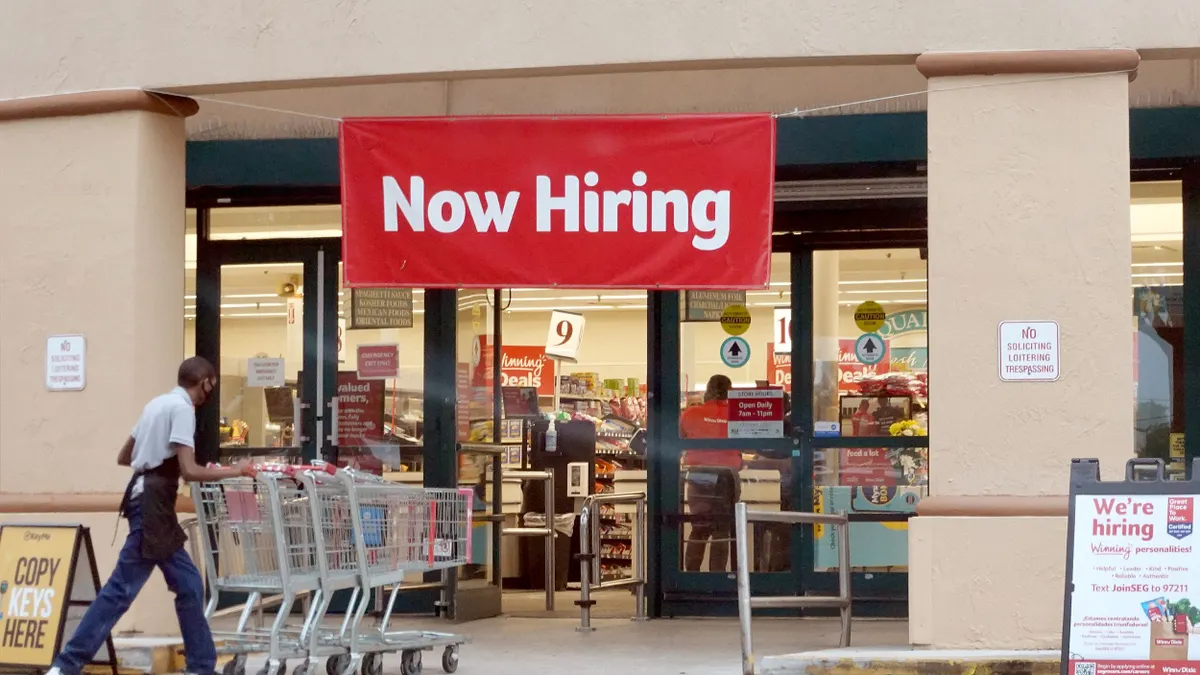As technology has made the world smaller, the workplace has become smaller as well, with more employers hiring foreign nationals to work at U.S. offices and more workers collaborating with colleagues around the globe.
But there are hurdles that go beyond time differences. There can be a divide between cultures and values. Luckily, however, there are simple steps HR can take to bridge those gaps.
The workforce, in general, is more globally engaged than ever, Jim Link, CHRO of Randstad North America, told HR Dive in an email, "so really, the shift is less drastic than we may think as employees are already well-equipped to work with foreign workers." Their own Workplace 2025 research shows that virtual or remote employees make up 22% of organizations today — and that globalization is a top reason to build an agile workforce.
Prepping for global colleagues
First, execs must consider how they can make sure employees feel connected to each other, the culture and the company's values, no matter their location, Natalie Baumgartner, chief workforce scientist at Achievers, told HR Dive in an email. To do this, she said, "leaders need to make sure their overall employee integration strategy focuses on creating a positive work environment and an exceptional employee experience for all."
Alison Egeberg, chief HR officer at Adform, is immersed in such an environment. She is from the U.S. but works in Denmark. "I’m so lucky to sit in our office with 40 people from 12 different countries which is very common in a lot of our bigger offices," she told HR Dive in an email.
Diversity is a big selling point for Adform when recruiting foreign nationals, she said. "They can immediately feel at home because of the inlay of diversity. Imagine a place where you’ll hear a lot of different languages spoken and where people automatically switch to English if someone is present and not speaking the same language, where you get treats from around the world, and where you get to challenge your own assumptions and have interesting debates like where Santa Claus is from (North Pole, Greenland, or Lapland)."
But working with global teams must be planned for and supported from the top down, Link said. He recommended short- and long-term strategies, processes and, of course, the right technology. Another consideration is compliance — assuring a company meets all local, regional and global rules and regulations.
Communication and collaboration with existing workers is key, Sally Hunter, senior vice president of Europe Service Delivery at Cielo, told HR Dive in an email, and that includes involving current employees in the onboarding process, regardless of whether the new employee is local or remote.
Training is key, both near and far
Unconscious bias training is needed, and likely should be mandatory, Hunter said. Such training can help de-mystify cultural differences and define the best ways to communicate with international colleagues. "We also recommend lunch-and-learn sessions — possibly including 'foods of the world,' that give all employees the opportunity to present their national food and share with colleagues," she added.
Moreover, diversity and inclusion training should be continuous for all teams working with global employees, Link said. "Arguably, the most important thing a company can do for a foreign national and their family is a cultural immersion program," he added. "These programs should be done as early as possible in the employee’s assignment and can incorporate both country and company immersion."
Cultural awareness training educates employees about what to expect regarding cultural similarities and differences and how to support and work successfully with non U.S.-based colleagues, Tara Quinnette, senior HR consultant at OneDigital Health and Benefits, explained. For leaders, Egeberg recommends situational training that provides tools for dealing with varying scenarios and how different cultures may respond or relate.
The same online training, Hunter added, should ideally be offered to employees abroad to ensure everyone is treated equally and they’re all on the same page. Equal training can help ensure a common understanding of cultural norms and provide the means to communicate effectively across any cultural divides. Cielo recommended a face-to-face visit with new colleagues early on in a new employee's tenure to ensure strong working relationships; video conferencing can have a positive impact on integration as well. And to ensure training is actually useful, Link suggested working with partners or companies in the same location as foreign workers for local training, including diversity and inclusion programs.
Adform, for example, uses interculture/intraculture training, with professionals leading discussions on how values and beliefs influence behaviors. The company also discusses how different cultures approach things, like persuasion. "One way isn’t better than another but rather a 'norm' of the culture / country which we should be aware of when working with and again checking our assumptions about 'why' someone behaves the way they do," Egeberg said.
Synchronized messaging
Acknowledging differences is important, as is clear communication that everyone will be respectful of diverse backgrounds and perspectives, Hunter said; "In many cases it has been helpful to have a message from the CEO that is broadcast across the business clearly stating why a diverse and harmonious workforce is important to the organization."
The tone has to be set from leadership and implemented through managers, Quinnette said. "Culture is created by every individual that works for the company, no matter where they are located physically," she explained. "It’s up to organizations to provide information, set expectations and empower employees to be part of the process in a culturally appropriate way."




















